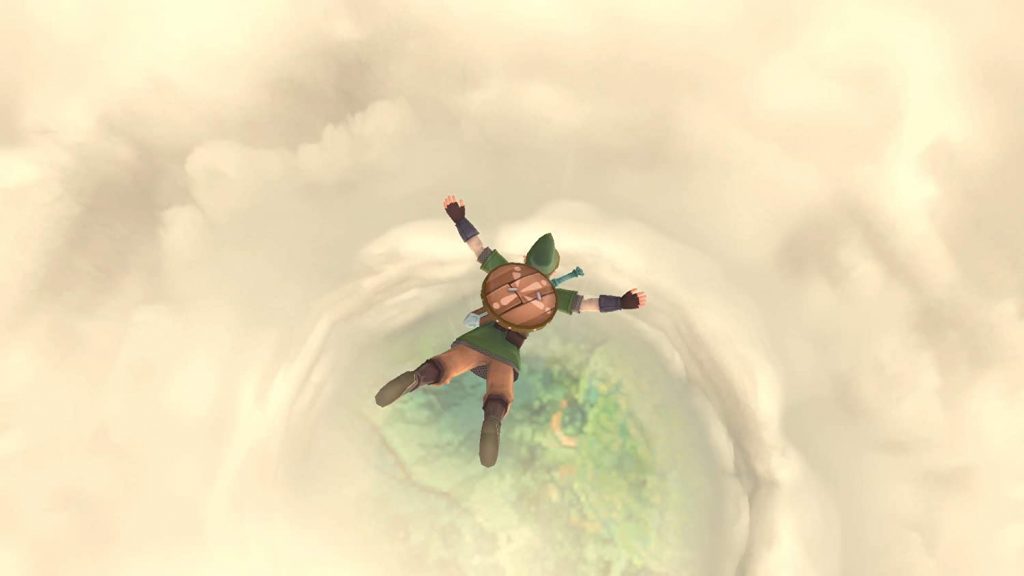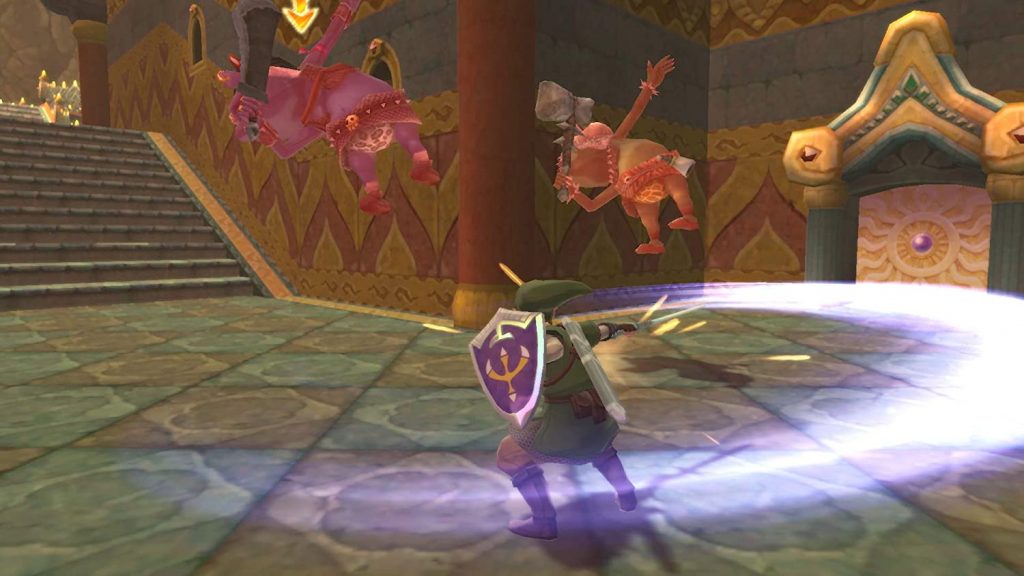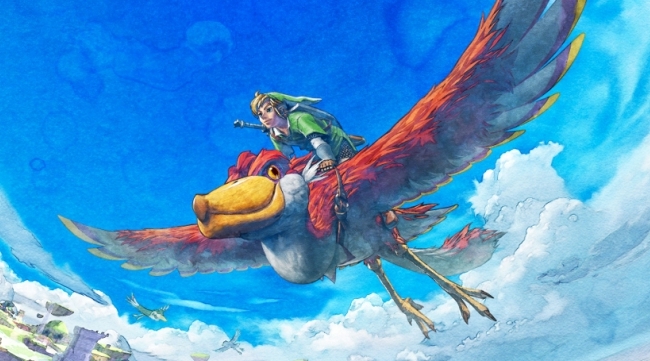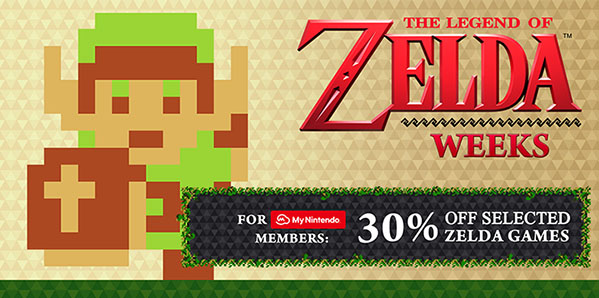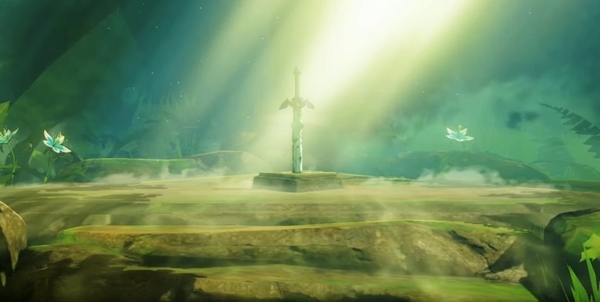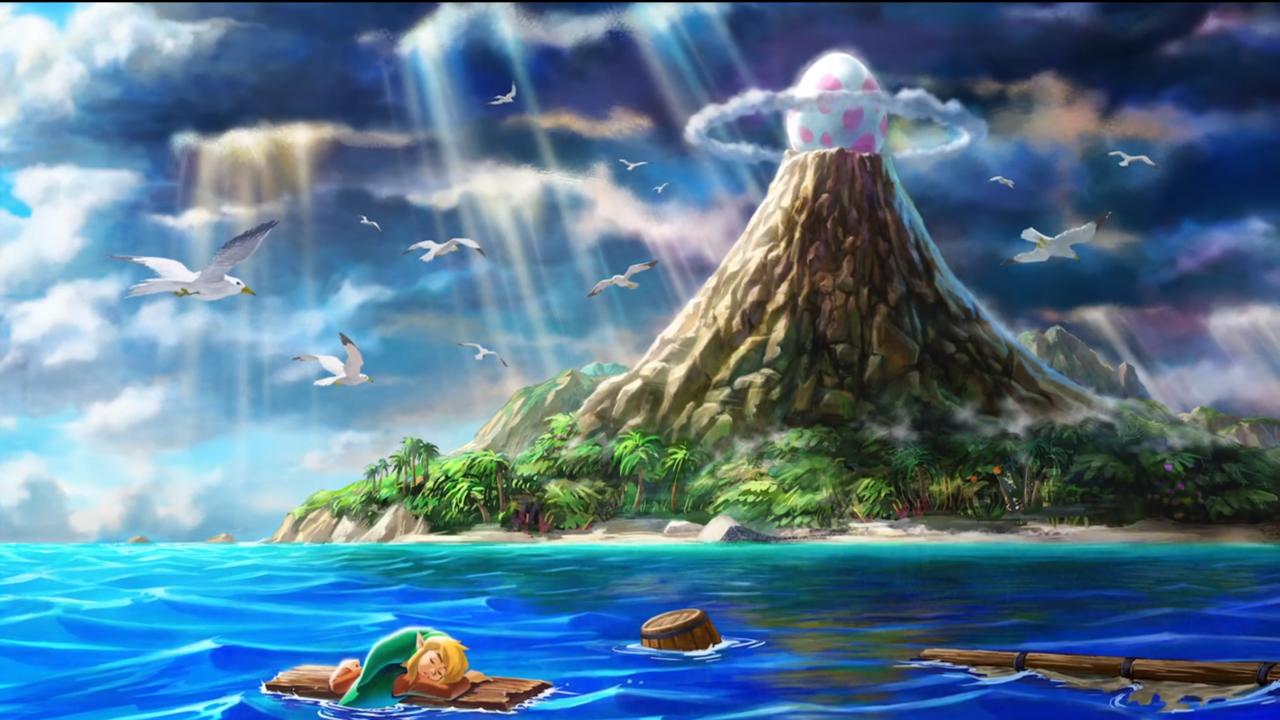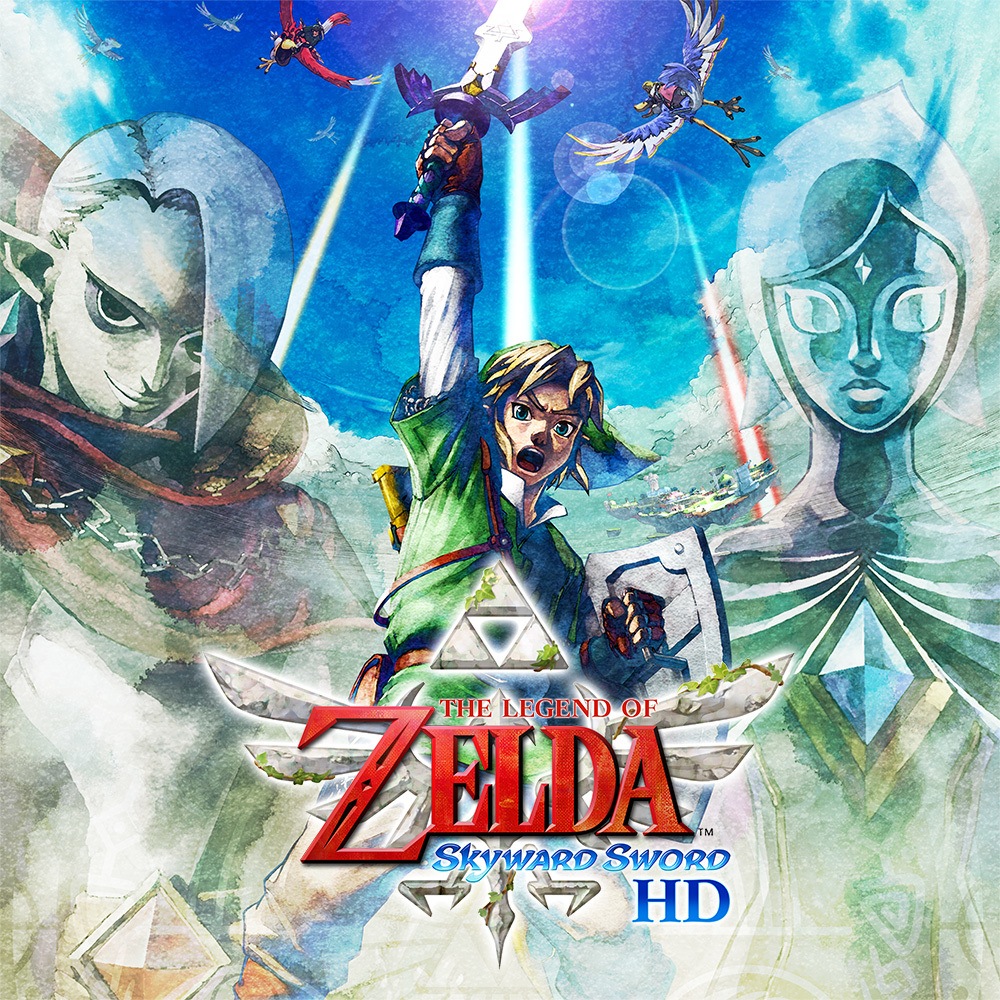
Skyward Sword was acclaimed upon its original release for the Wii, as a Zelda title that finally properly put you in the shoes of Link through the use of the then-new ‘Wii Motion Plus’ controller. Boasting more accurate motion controls, the game was built around Link replicating your sword slashes and movements in-game, renouncing his traditionally lefty nature to become a righty to suit the majority of players. Ten years on, Skyward Sword HD, a remaster of the original, has arrived on the Nintendo Switch, where motion controls are still a thing, but not quite the be-all and end-all they were at the time of the Wii. As both games in general and the Zelda franchise has moved on, Skyward Sword HD returns to an interesting chapter in the series, albeit one which has been roundly surpassed since.
It’s a little tough going back to Skyward Sword after 4 years of Breath of the Wild. Skyward Sword is very much built on the roots of the traditional 3D Zelda formula, established in Ocarina of Time and iterated upon by every successive entry, until BOTW finally upended the concept. However, Skyward Sword HD shares the same director, Eiji Aonuma, as Breath of the Wild and the seeds of many ideas which would become foundational for that game can also be seen here, such as Link’s stamina system, basic climbing and the sailcloth.
Going back to Skyward Sword now is almost like an paleontological excavation, finding the transitionary periods in the sediment of the Zelda series where the bones of the old OoT gameplay style began to evolve into the new. The thing is, digging through the layers of any kind of Zelda game isn’t necessarily a bad thing, given how solid every layer of Zelda is. The metaphor is starting to break down, I feel.
Skyward Sword is chronologically the earliest we’ve been in the Zelda timeline, set at a point where there was no Ganon, or even a Master Sword. Link and his friend Zelda live above the clouds in Skyloft, a land of floating islands where the Goddess Sword resides. One day, their relative peace is disrupted by a dark tornado, sending Zelda plummeting down to the surface which hasn’t been visited for generations, forcing Link to follow her, Goddess Sword in hand. The Sword contains a spirit, Fi, who while an ethereal wisp acts more like a cross between Tony Stark’s JARVIS and Data from Star Trek. The ensuing adventure reveals the origins of the cycle of reincarnation shown in every Zelda title, and features some memorable encounters with weirdo characters like the evil Ghirahim and incomparable Groose.
Compared to many other games in the series, and especially BOTW, Skyward Sword is fairly linear. Early dungeons don’t offer much in the way of difficulty, but there’s plenty in the game, and as you progress they start to combine your tools in interesting ways. There’s some out-of-the-box thinking about how some dungeons operate, especially with the Sandship later on, and the game can get pretty creative, even if you find yourself revisiting the same locations often.
A lot of that creativity is focused on the motion controls – although, in Skyward Sword HD, you’re no longer bound to them. Nintendo have included button controls in this remaster, amusingly showing that everything the Wii Motion Plus could do, could always have been mapped to the right analogue stick. However, while it feels a little more precise than motion controls, it’s still awkward and impractical. In theory it should make for more technical gameplay, as you make precisely angled strikes that slice through enemy defences, but all it really does is just slow everything down even more to compensate. Unfortunately, motion controls were a big part of almost every dungeon and gadget’s design, and even fundamental elements like balancing and aiming (which isn’t too bad, to be fair).
Controls in the original game were also modelled around the Wii’s rather limited range of buttons, which transfers through to this Switch release sadly. Camera control can only be activated by holding down the ‘L’ shoulder button, there’s an array of quick-menus that you need to constantly be activating through holding down certain buttons. It just all feels a bit clunky, and out of place on a console two generations removed from the Wii. The same goes for flying in Skyward Sword‘s airborne open area – it works fine, but transitioning between flying and landing, or loading up Skyloft, is just a bit of a leap back from open world games today.
However, there are quite a few other improvements that Skyward Sword HD makes to the original. As the title implies, the game now runs in 1080p, at a steady 60fps, a big improvement over the Wii’s SD visuals. Fi’s constant nagging contributions have been limited, and can be mostly optionally activated by the d-pad, which helps streamline the tutorials considerably. If you have the matching Skyward Sword amiibo, then you’ll be able to unlock the ability to return to the sky at any time, which is a nice bonus but hardly essential as there are save statues littered everywhere which serve the same purpose.
The Legend of Zelda: Skyward Sword HD is a lot more interesting than I thought it would be, in a post-BOTW landscape where it can be examined as a precursor to its major changes. While the story and characters are good, it’s more of an artefact of the time it was made – when the original 3D Zelda formula had been trotted out countless times, and motion controls were the big new gimmick. As for whether it still holds up today, while the changes and additions Nintendo have made are welcome, Skyward Sword HD is still sadly just a bit clunky to play. The limitations of the technology and controls hinder gameplay in a way that remasters of games like Wind Waker and Link’s Awakening didn’t experience or were able to overcome. It’s always nice to have another Zelda game on your current console, but Skyward Sword does feel like one that maybe should have stayed back in 2011 on the Wii.
-Neat visuals, fun characters -Its linear nature and plot work together to make an important transition point between the 3D Zelda of old and new -Many of the mechanics which Breath of the Wild would expand on began their life here
-Motion controls haven't aged well, and the analogue substitute isn't great either -Despite streamlining, the game's opening hours are a bit of a bore

